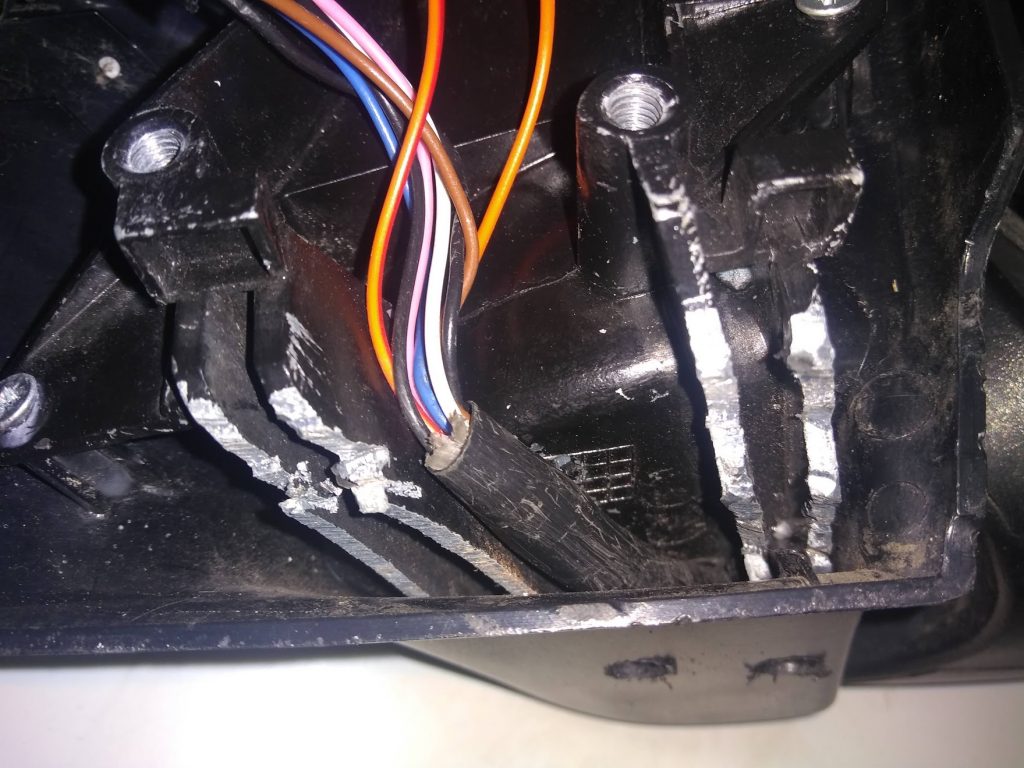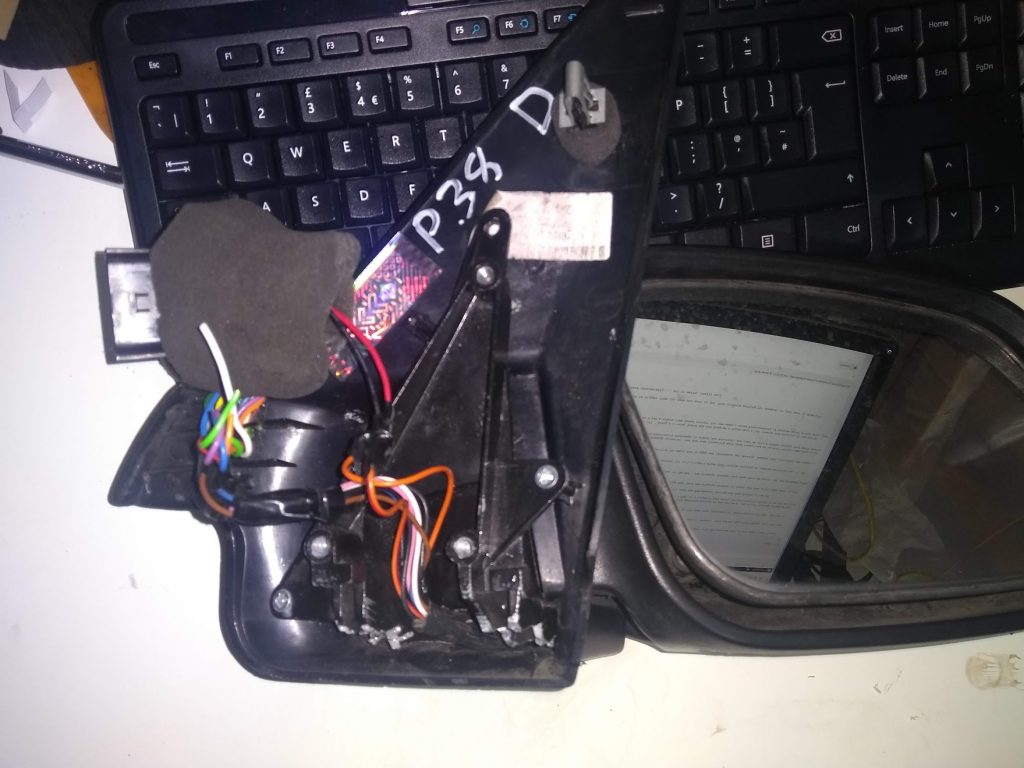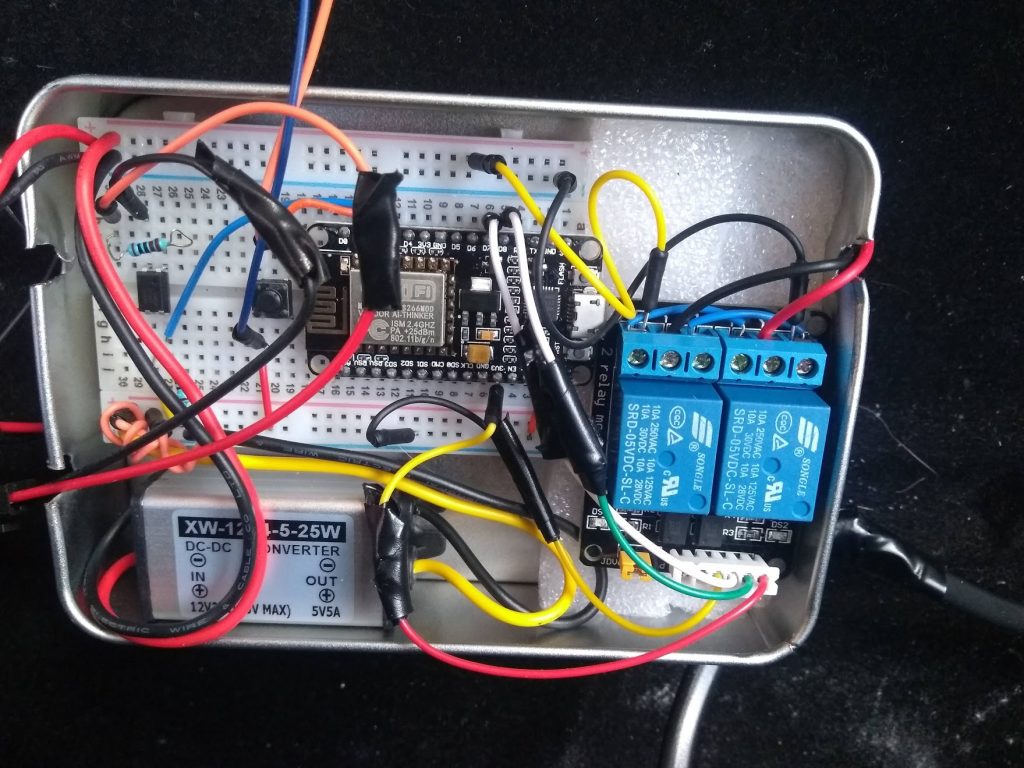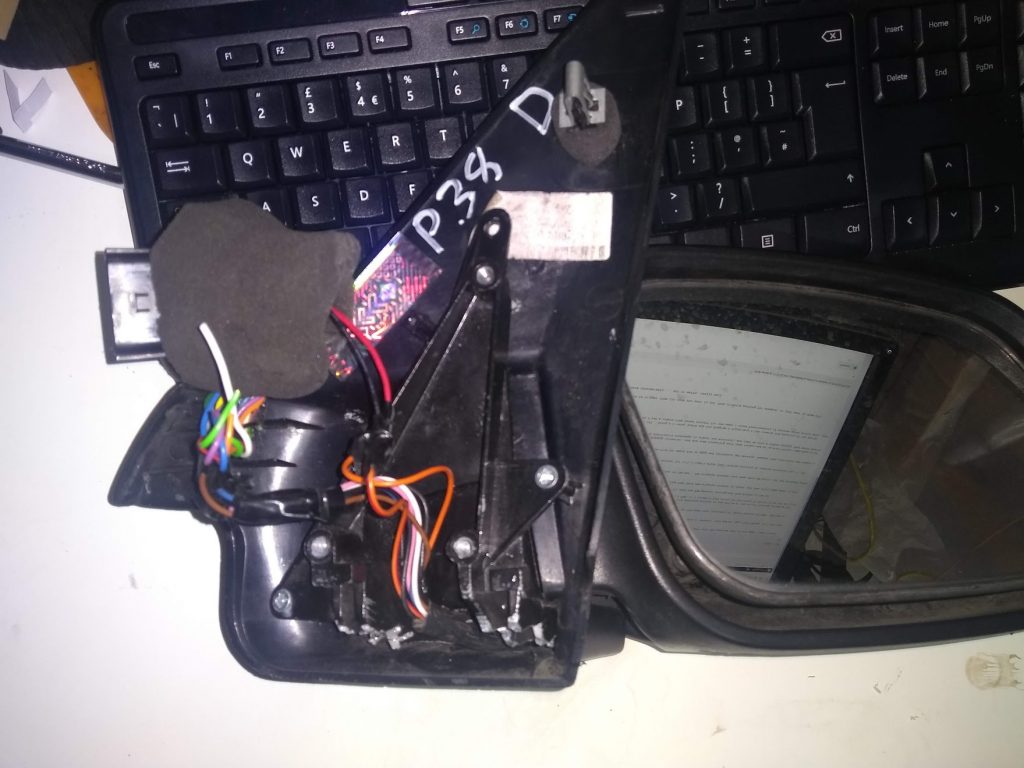After having my range rover for a couple of months, a few things have started to annoy me, notably having to push the wing mirrors in when I park up on my (narrow, typically British) front street. Because the car is so wide, if I park with the nearside next to the kerb I have to walk round the car to reach the mirror on that side. Clearly this is unacceptable, so I sought a solution.
This is post #2 about my ongoing modifications to my 2001 Range Rover ‘P38’. You can find part 1 here
If you look online, you can find a lot of information about the electronics in the P38, most of which tells you to stay as far away as possible from them! For the mirrors to fold in when the car is parked I only need to tap into a ‘battery’ live and an ‘acc’ live though, so I can stay clear of the majority of the troublesome stuff.
My first thought was to see if there was already a power fold mirror available for the P38, maybe on a higher trim / spec level. Unfortunately it seems Land rover never made one… but my searches did turn up the fact that the Land rover Discovery II, which debuted in 1998, did have a powerfold mirror option. I already knew that the Discovery II and the P38 shared a lot of common components, is it possible that the mirrors are the same?
The Franken-mirror
It turns out that the P38 and discovery 2 mirrors are almost, but not quite the same. The bracket for the P38 has a central ‘pillar’ which the mirror housing sits on. The discovery II bracket has notches which fit into matching notches on the bottom of the mirror housing, allowing the motor inside the housing to turn the mirror. Somewhat infuriatingly, the plastic section of the bracket, which slots into the bodywork on the car is also slightly different. The Discovery II plastic won’t fit onto a P38, so I couldn’t just stick the Discovery II mirror to my car as it is.
After pulling apart both mirrors and having a bit of a headscratch, I found a solution…. since the metal section of the bracket are made of aluminium, it’s pretty easy to chop down the Discovery II bracket to fit into the P38 plastic housing and then attach to the car.

You can see my ‘modified’ bracket here, the shiny silver shows where I’ve cut the bottom of it off to fit into the plastic. I also had to run a dremel inside the bottom of the housing to remove the plastic ridge that held the original bracket in place, and then drill some holes in the bottom of the housing to access the bolts that attach the plastic housing to the metal bracket.

So, with a bit of ingenuity, and some ‘persuading’ I now have a power fold mirror that will fit nicely onto the P38 (note: if you’re playing at home, you’ll need some long bolts to actually mount the bracket to the car. The original bracket uses some short M4 bolts, but the threaded holes on the DiscoII are much shorter, so you’ll need something like 40 or 45mm bolts to reach).
Elec-trickery
The next challenge is those dreaded electrics! Both mirrors again have a lot in common here, the mirror adjustment hardware is in fact almost identical, there’s 2 pairs of wires (1 set for up / down, another for left / right) which just reverse polarity to reverse direction (so +/- for ‘up’ changes to -/+ for down). You can use a voltmeter and trial and error to figure out which wires from the P38 match the wires on the mirror.
For the actual powerfold, things get a bit trickier. Since the P38 never had those, there’s no electrics in place. The DiscoII does have an optional mirrorfold controller (see here) which you can find for about £20 on ebay and (probably) get working, however that controller was always a bit temperamental and only worked on a button push, not with ignition status…so I thought I could do better.
I picked up a cheap arduino clone, and did some tinkering with some relays and an opto-coupler (this bit was almost entirely trial and error, my electronics knowledge is almost non-existent) and came up with a simple curcuit that works pretty well.
The opto-coupler isolates the arduino from the electrically ‘noisey’ environment of the car, while letting me trigger one of the arduino’s digital input pins when the ignition goes on or off. Using a 2 relay board and the diagram I found here I can reverse the polarity of the mirror control lines based on 2 output pins on the arduino. The mirror itself has protection circuitry to prevent burning out the motors if you try to ‘open’ the mirror when it’s fully open, so I use a simple time based shutoff for the open / close functionality (4 seconds works pretty well, your mileage may vary).
The code for the arduino is here: Github
it’s a bit messy (my first arduino code) but the basic functionality is that if the ignition goes on or off, the mirrors are triggered to open or close. You can also use a button to trigger them (in case you want to put them in while parking for example, or just want to show off)

Here’s my current build of the mirror controller. It’s a bit big, since it’s all built out on a breadboard, and if I could be bothered making my own PCB the size could be reduced considerably…. but it works, really well.
